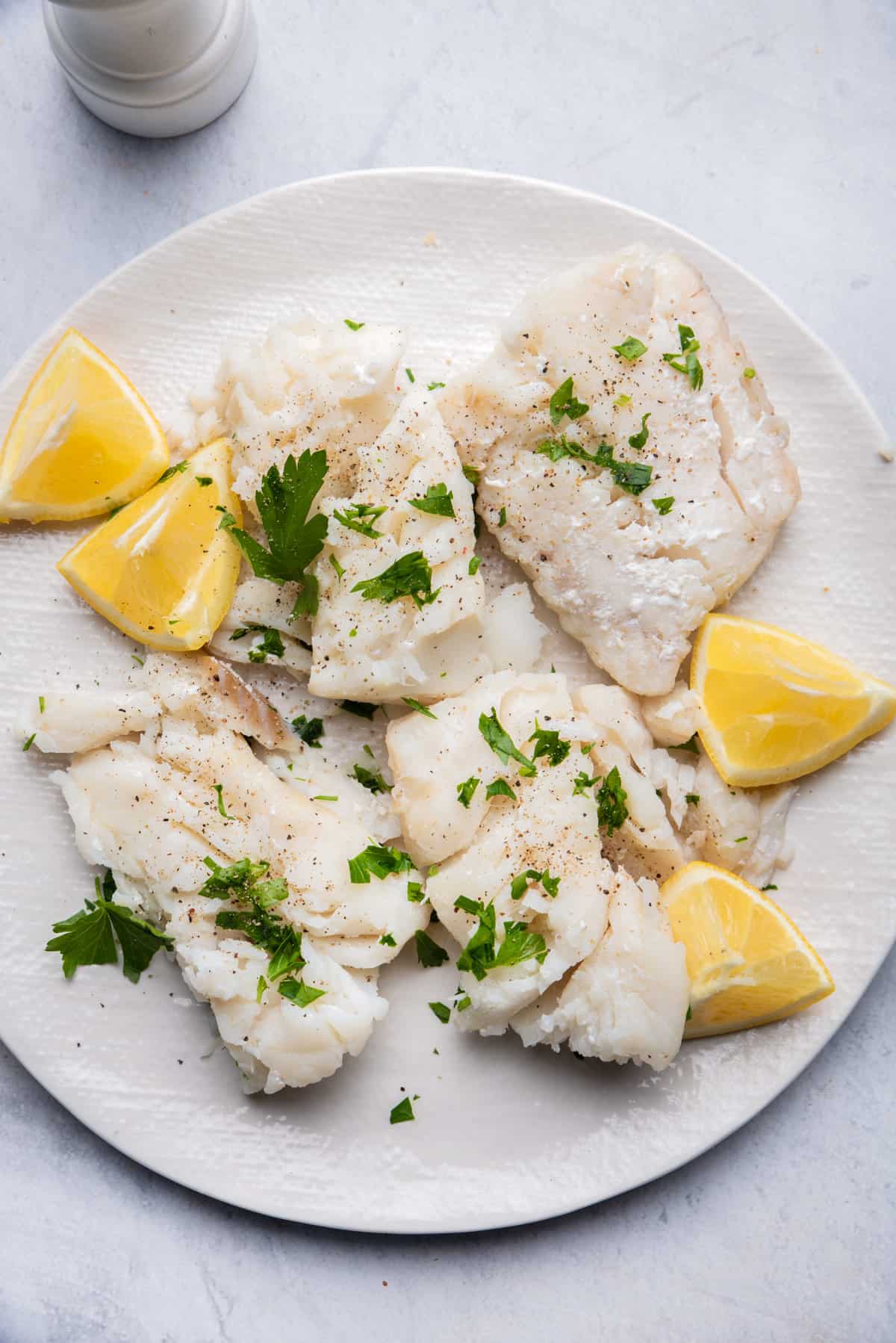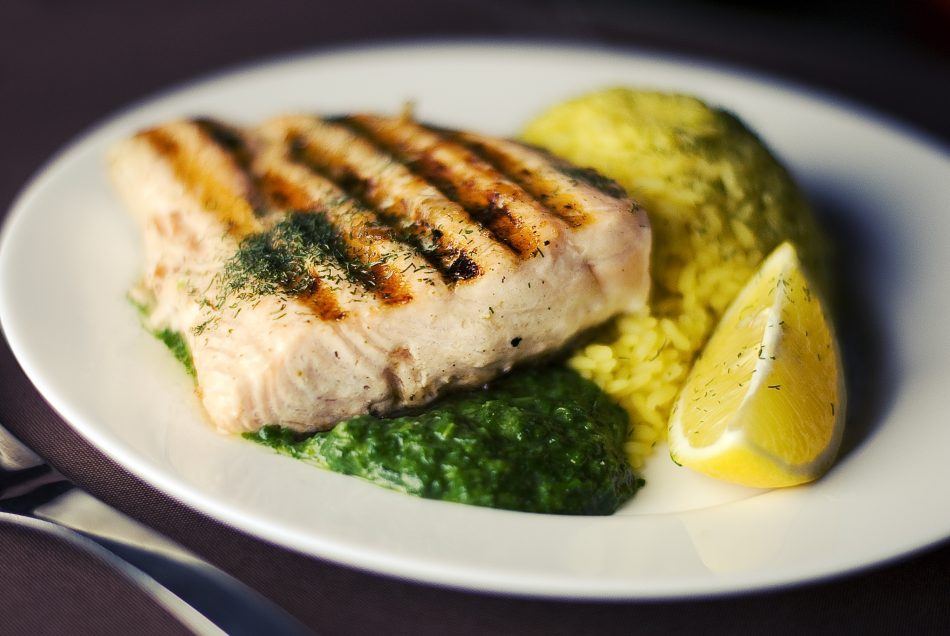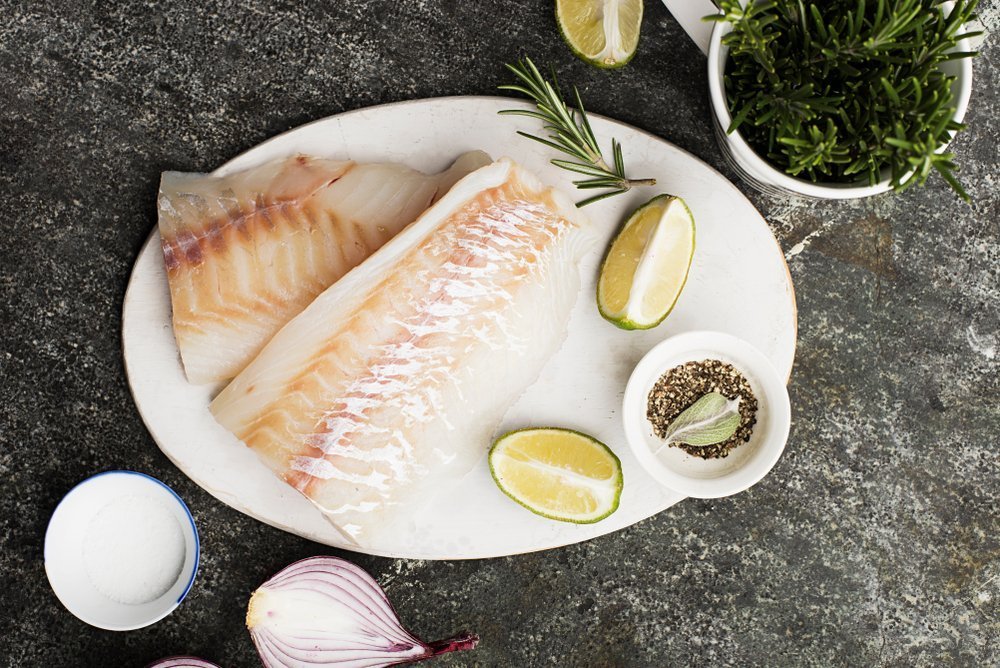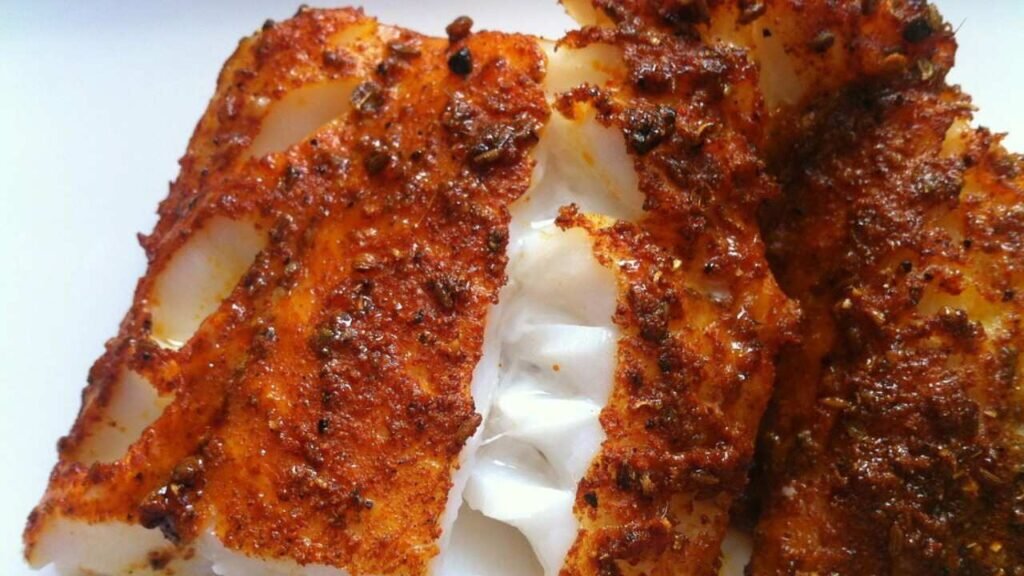Cooking frozen fish is easy and convenient. It saves time and delivers delicious results.
Fish is a healthy protein source, and frozen fish retains its nutrients well. Many people worry about cooking frozen fish, but it’s simple and quick. With the right techniques, you can enjoy a tasty fish meal without thawing. This guide will show you how to cook frozen fish perfectly every time.
We’ll cover methods and tips to ensure your fish is flavorful and cooked just right. Whether you’re a beginner or experienced cook, these steps will make your fish meals a success. Let’s dive in and discover the secrets to cooking frozen fish!

Credit: feelgoodfoodie.net
Choosing The Right Frozen Fish
Knowing how to choose the right frozen fish is crucial for a delicious meal. This guide will help you identify the best options available.
Types Of Fish
There are many types of frozen fish available. Each type offers unique flavors and textures. Here are some popular options:
- Salmon: Rich in flavor and packed with omega-3 fatty acids.
- Cod: Mild taste with a flaky texture.
- Tilapia: Versatile and easy to cook.
- Haddock: Sweet taste and firm texture.
- Halibut: Meaty texture and mild flavor.
Quality Indicators
To ensure you get the best frozen fish, look for these quality indicators:
- Packaging: The packaging should be intact and free from damage.
- Frost: Avoid fish with excessive frost or ice crystals.
- Color: The fish should have a natural color. Avoid fish with dull or discolored spots.
- Smell: Frozen fish should have a neutral smell. Strong odors indicate spoilage.
By following these tips, you can choose the right frozen fish for your next meal.
Thawing Techniques
Proper thawing techniques are essential to maintain the texture and flavor of frozen fish. Whether you are planning a quick dinner or a gourmet meal, knowing how to thaw frozen fish correctly ensures the best possible result. Here are two effective methods to thaw frozen fish safely and efficiently.
Refrigerator Method
The refrigerator method is the safest way to thaw frozen fish.
- Place the frozen fish in a shallow dish.
- Cover the dish with plastic wrap or a lid.
- Leave the fish in the refrigerator for 8-12 hours.
This method allows the fish to thaw slowly, preserving its texture. Remember to plan ahead, as this method requires time.
Cold Water Method
The cold water method is faster than the refrigerator method.
- Place the frozen fish in a sealed plastic bag.
- Fill a large bowl with cold water.
- Submerge the bagged fish in the water.
- Change the water every 30 minutes.
Fish typically thaws in 1-2 hours using this method. Important: Ensure the bag is sealed tightly to prevent water from soaking the fish.
| Method | Time Required | Pros | Cons |
|---|---|---|---|
| Refrigerator Method | 8-12 hours | Preserves texture | Requires planning |
| Cold Water Method | 1-2 hours | Quick | Needs monitoring |
Baking Frozen Fish
Baking frozen fish is a simple and effective cooking method. It’s quick, easy, and requires minimal preparation. This method ensures the fish stays moist and retains its natural flavors. Below, we’ll dive into the steps you need to follow for a perfect baked fish.
Preparation Steps
- Preheat the Oven: Set your oven to 450°F (232°C).
- Line a Baking Sheet: Use parchment paper or aluminum foil to line a baking sheet.
- Rinse the Fish: Rinse the frozen fish fillets under cold water. Pat them dry with a paper towel.
- Season the Fish: Brush the fillets with olive oil or melted butter. Sprinkle with salt, pepper, and your favorite herbs.
- Place on Baking Sheet: Arrange the fillets in a single layer on the prepared baking sheet.
Optimal Baking Time
The optimal baking time varies based on the thickness of the fish fillets. Here’s a general guideline:
| Thickness of Fish | Baking Time |
|---|---|
| 1/2 inch (1.27 cm) | 10-12 minutes |
| 1 inch (2.54 cm) | 15-18 minutes |
| 1 1/2 inches (3.81 cm) | 20-25 minutes |
Check for doneness by inserting a fork into the thickest part of the fillet. The fish should flake easily and be opaque all the way through.
Pan-searing Frozen Fish
Cooking frozen fish is convenient and saves time. Pan-searing frozen fish is a great way to get a crispy exterior while keeping the inside moist and tender. This method is quick and easy, making it perfect for busy weeknights or last-minute meals.
Necessary Tools
To pan-sear frozen fish, you will need a few basic tools:
- Non-stick or cast-iron skillet: Ensures even heat distribution.
- Fish spatula: Helps flip the fish without breaking it.
- Paper towels: Pat the fish dry before cooking.
- Olive oil or butter: Adds flavor and prevents sticking.
- Seasonings: Salt, pepper, and any other desired spices.
Cooking Tips
Follow these tips for perfect pan-seared frozen fish:
- Preheat the skillet: Heat the skillet over medium-high heat for about 3 minutes.
- Dry the fish: Use paper towels to pat the fish dry. This helps achieve a crispy crust.
- Season the fish: Season both sides with salt, pepper, and your favorite spices.
- Use enough oil or butter: Add a tablespoon of olive oil or butter to the skillet.
- Place the fish in the skillet: Lay the fish in the skillet, skin-side down if it has skin.
- Cook without moving: Let the fish cook undisturbed for 4-5 minutes.
- Flip carefully: Use a fish spatula to flip the fish gently.
- Cook the other side: Continue cooking for another 3-4 minutes until fully cooked.
Pan-searing frozen fish is easy and quick. With the right tools and tips, you can enjoy a delicious meal in no time.
Grilling Frozen Fish
Grilling frozen fish is a quick and simple way to enjoy a healthy meal. You don’t need to thaw the fish before grilling. This method saves time and still delivers delicious results. Below are some tips to help you get started.
Prepping The Grill
First, clean the grill grates to remove any old food. Dirty grates can cause the fish to stick. Preheat the grill to medium-high heat. This ensures the fish cooks evenly. Use a grill brush to scrub the grates. This step is crucial for avoiding sticking.
Next, oil the grates. You can use a paper towel dipped in vegetable oil. Hold the paper towel with tongs and rub it over the grates. This creates a non-stick surface. It also adds a bit of flavor to the fish.
Seasoning Suggestions
Seasoning adds flavor to your fish. You can use simple salt and pepper. Or, try some of these suggestions:
- Lemon and Dill: Fresh and light. Perfect for white fish.
- Garlic and Herb: Robust and savory. Ideal for all types of fish.
- Spicy Cajun: Bold and zesty. Great for those who like heat.
For a more advanced flavor profile, you can create a marinade. Mix olive oil, lemon juice, garlic, and herbs. Let the fish sit in the marinade for 15 minutes before grilling. This enhances the flavor and keeps the fish moist.
Finally, always remember to season both sides of the fish. This ensures even flavor throughout.

Credit: georgehughesfishmonger.com
Microwaving Frozen Fish
Cooking frozen fish in the microwave can be quick and convenient. This method saves time and ensures your fish is cooked thoroughly. Follow these steps to achieve perfectly microwaved frozen fish.
Microwave Settings
Using the right settings ensures your fish is cooked evenly. Here are the recommended settings:
- Power Level: Set your microwave to medium-high (70% power).
- Time: Cook for 4-5 minutes per fillet. Adjust based on thickness.
- Turning: Flip the fish halfway through cooking for even heating.
These settings help retain moisture and flavor. Avoid overcooking which makes the fish dry.
Safety Precautions
Safety is crucial while microwaving frozen fish. Follow these precautions:
- Use microwave-safe containers to avoid harmful chemicals.
- Cover the fish with a microwave-safe lid or wrap. This prevents splattering.
- Check internal temperature with a food thermometer. It should reach 145°F (63°C).
- Let the fish sit for a minute after cooking. This ensures even heat distribution.
Following these precautions ensures your fish is safe to eat. Always prioritize food safety.
Flavorful Marinades
Cooking frozen fish can be a quick and healthy meal option. To make your fish more delicious, use flavorful marinades. A good marinade can transform frozen fish into a tasty dish. Let’s dive into some simple recipes and tips for marinating frozen fish.
Simple Marinade Recipes
Here are a few easy marinades you can try:
| Marinade | Ingredients |
|---|---|
| Lemon Garlic |
|
| Teriyaki |
|
| Herb Mustard |
|
Marinating Tips
- Thawing: Thaw the fish before marinating for even flavor absorption.
- Time: Marinate for at least 30 minutes, but not more than 2 hours.
- Container: Use a glass or plastic container, not metal.
- Refrigeration: Always marinate fish in the fridge.
- Quantity: Ensure the fish is fully covered by the marinade.
Using marinades can make your frozen fish much more enjoyable. Try these recipes and tips to enhance your meals.

Credit: thehealthyfish.com
Serving Suggestions
Serving frozen fish can be a delightful experience with the right pairing. Whether you prefer a light meal or something more hearty, the right side dishes and garnishing ideas can elevate your dish.
Side Dishes
Choosing the perfect side dishes can complement the flavor of the fish. Here are some delicious options:
- Steamed Vegetables: Broccoli, carrots, and green beans are excellent choices.
- Rice Pilaf: A simple yet flavorful rice dish can enhance the meal.
- Mashed Potatoes: Creamy and smooth, they pair well with fish.
- Quinoa Salad: A healthy and light option with a nutty flavor.
- Coleslaw: Adds a crunchy texture and tangy taste.
Garnishing Ideas
Garnishing your fish can add visual appeal and extra flavor. Here are some easy and attractive garnishing ideas:
- Lemon Wedges: Fresh lemon slices add a zesty touch.
- Herb Sprigs: Fresh parsley, dill, or cilantro can brighten the plate.
- Capers: A small amount adds a salty and tangy flavor.
- Cherry Tomatoes: Halved and placed around the fish, they add color and taste.
- Sliced Radishes: Thinly sliced for a pop of color and crunch.
These serving suggestions can transform your frozen fish into a gourmet meal. Experiment with different side dishes and garnishes to find your perfect combination.
Frequently Asked Questions
How Long To Cook Frozen Fish?
Cooking frozen fish usually takes 20-25 minutes in the oven. Ensure the internal temperature reaches 145°F.
Can You Cook Frozen Fish Without Thawing?
Yes, you can cook frozen fish without thawing. Just adjust cooking time by adding a few extra minutes.
What Is The Best Way To Cook Frozen Fish?
Baking or grilling are the best methods to cook frozen fish. They retain moisture and flavor well.
Is It Safe To Cook Frozen Fish Directly?
Yes, it’s safe to cook frozen fish directly. Make sure it reaches a safe internal temperature of 145°F.
Conclusion
Cooking frozen fish is simple and rewarding. Follow the steps mentioned above. You’ll enjoy tasty and healthy meals. Remember to thaw properly for best results. Season well to enhance the flavor. Use the right cooking method for your fish type.
Whether baking, grilling, or frying, always check for doneness. Enjoy experimenting with different recipes. A little practice makes perfect. Frozen fish can be a quick dinner option. Enjoy your culinary journey!



